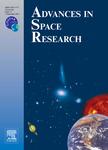版权所有:内蒙古大学图书馆 技术提供:维普资讯• 智图
内蒙古自治区呼和浩特市赛罕区大学西街235号 邮编: 010021

作者机构:Chinese Acad Sci Key Lab Aquat Bot & Watershed Ecol Wuhan Bot Garden Wuhan 430074 Peoples R China China Univ Geosci Wuhan Sch Geog & Informat Engn Wuhan 430074 Peoples R China Hainan Normal Univ Coll Geog & Environm Sci Haikou 571158 Hainan Peoples R China
出 版 物:《ADVANCES IN SPACE RESEARCH》 (空间研究进展)
年 卷 期:2022年第69卷第3期
页 面:1494-1512页
核心收录:
学科分类:08[工学] 0708[理学-地球物理学] 0706[理学-大气科学] 0704[理学-天文学] 0825[工学-航空宇航科学与技术]
基 金:Hainan Provincial Depart-ment of Science and Technology [ZDKJ2019006] National Natural Science Foundation of China [32101525, 42061048, 41361090]
主 题:Mangrove species LiDAR Sentinel-2 Feature selection Point density
摘 要:Mapping mangrove species is important for mangrove conservation and rehabilitation. However, due to the similar spectral signatures of most mangrove species, accurately mapping mangrove species remains an ongoing challenge. Unmanned aerial vehicles paired with light detection and ranging sensors (UAV-LiDAR) have the potential to increase separability between mangrove species by providing vertical structure information with high flexibility and low cost and could be complementary to optical imagery. In this study, we combined UAV-LiDAR and Sentinel-2 data to classify mangrove species in two representative mangrove forests in China. Moreover, an architecture diagram of important features for discriminating mangrove species was first constructed using a modified recursive feature elimination method and a proposed step-by-step method, including hierarchical clustering, scatterplots, and boxplots. This architecture diagram could indicate the specific role of each feature (or group) in demarcating specific mangrove species and help other mangrove studies prepare candidate features. The combined UAV-LiDAR and Sentinel-2 data produced the highest overall accuracies of 85.60% and 91.61% in the Dongzhaigang National Nature Reserve and Qinglangang Provincial Nature Reserve areas, respectively, compared to those of the Sentinel-2 (80.00% and 80.42%, respectively) and UAV-LiDAR (77.60% and 75.52%, respectively) data alone by using the novel canonical correlation forest algorithm. Important LiDAR features included metrics describing the top, bottom, and overall (e.g., Hstd and GM2nd) morphological characteristics of the mangrove canopy, which characterized the vertical stratification and shape of the canopy. The added value of the UAV-LiDAR data mainly lies in improving the separability between shrub-like mangroves and arbor mangroves that had similar spectral signatures, such as A. marina and R. stylosa. The point density might have little effect on feature selection and classif